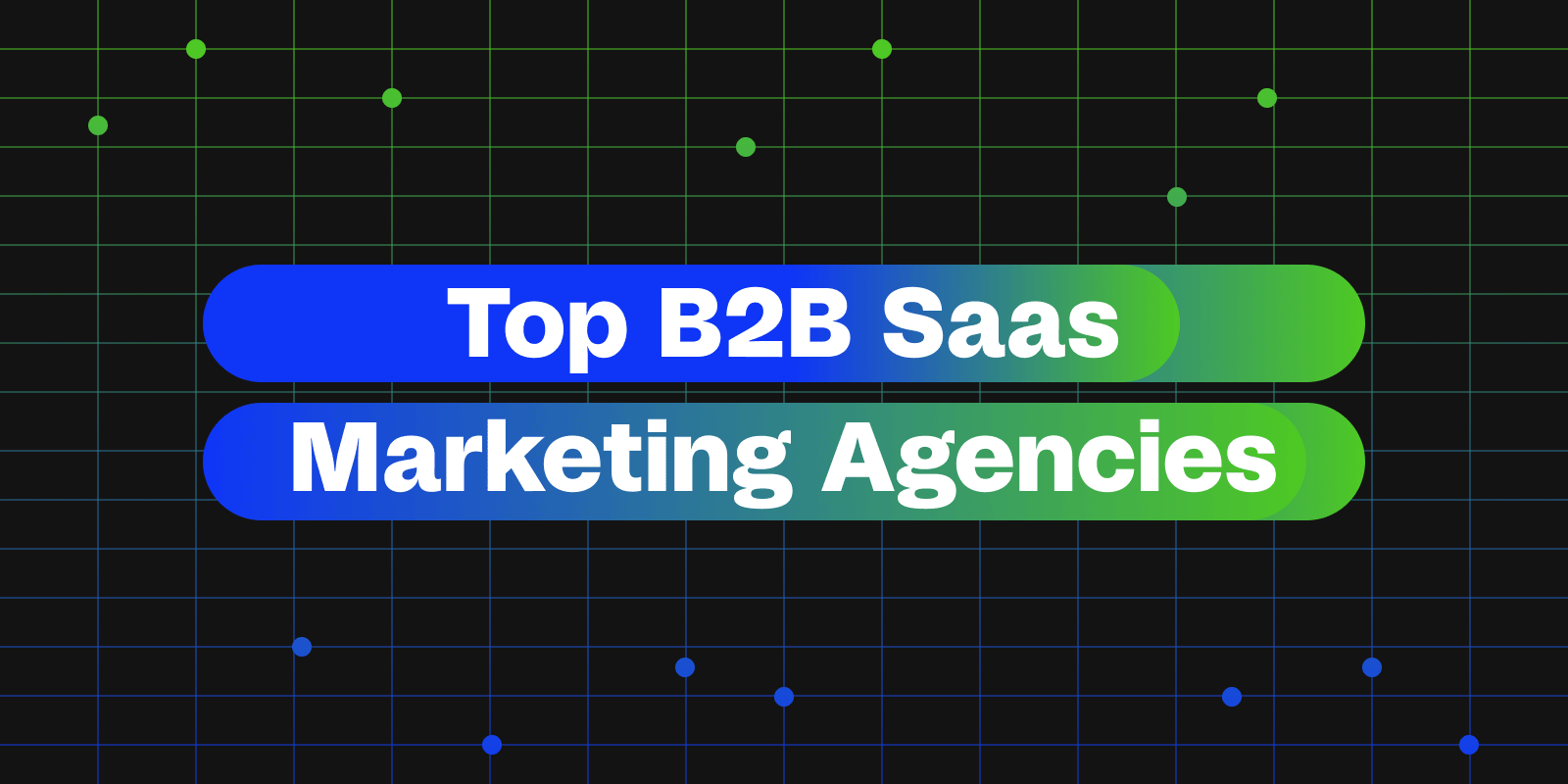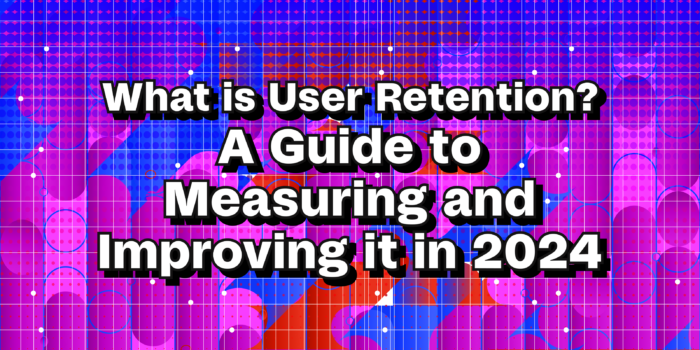Duolingo is one of the most popular and widely used language-learning platforms, with over 500 million total users worldwide, offering language courses ranging from French to Catalan.
What you may not know is that while many companies grow through paid marketing, Duolingo actually acquired ~80% of their users organically. More specifically, Duolingo did this by leveraging Product-led Growth as a lever to expand its consumer base — providing an interactive and gamified approach to language learning, making it accessible to a broad range of users, from beginners to more advanced learners.
Product-led growth is a go-to-market strategy that relies on the company to create and iterate on a product that turns customers into loyal fans who will then introduce the product to their friends, creating a viral growth loop. This approach prioritizes creating a great product that solves a real need for customers; relying on the product to drive word-of-mouth referrals and organic growth. It is an incredibly powerful strategy as current advocates for the product help generate a growth loop of new users that distinctly reduces customer acquisition costs, especially for startups.
Duolingo’s product-led growth was based on 3 main tenets:
- Gamification
- Community-based learning
- A learning-driven team obsessed with A/B testing
Gamification
One of the biggest and most important PLG levers for Duolingo is gamification. With learning anything, the teacher-student bond and internal motivation to reach a better understanding of the subject are key factors in a student’s learning journey. In order to replicate this, Duolingo heavily depends on gamification to not only make the language-learning experience enjoyable for users but also create a sense of achievement and motivation that keeps users coming back regularly, in turn increasing user engagement and retention.
As part of their growth, the team at Duolingo very quickly and smartly saw parallels between the entertainment that gaming apps provided and the consistent learning required for languages. Top digital games, in general, had much higher retention rates across industries. Seeking early inspiration from games like Angry Birds and Clash Royale, Duolingo incorporated key gamification elements, such as points, streaks, and rewards, to make the learning process fun and addictive.
To start off, Duolingo rewards users with XP (Experience Points) and gems, the game’s in-app currency for completing lessons, exercises, and daily challenges. Earning experience points is a physical representation of a user’s progress, giving learners a more concrete sense of accomplishment which in turn motivates them to continue learning to increase their scores. Gems, on the other hand, gamify the learning experience even further since it acts as a virtual currency used to repair lost streaks, refill hearts, and unlock bonus lessons or content.
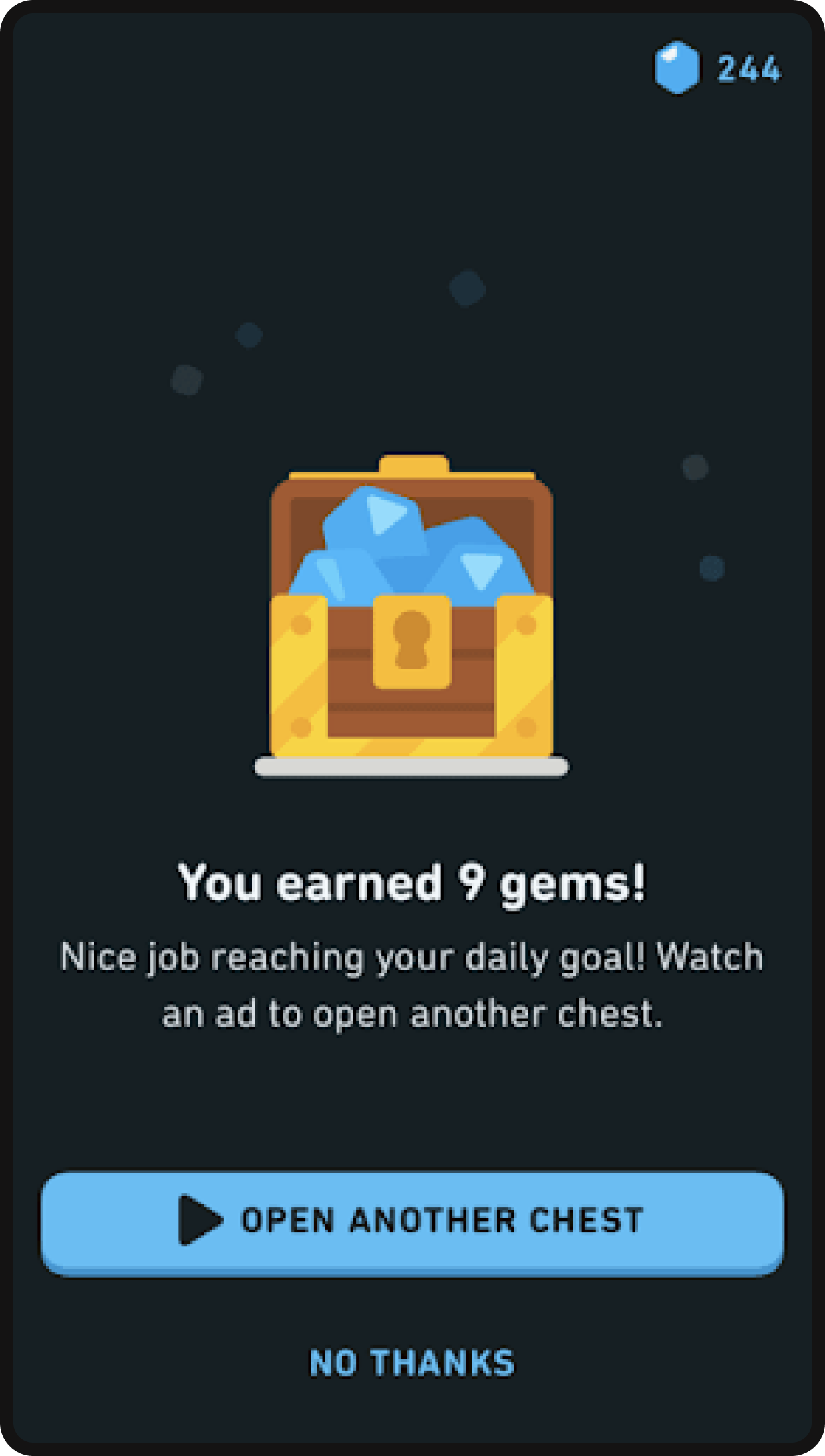
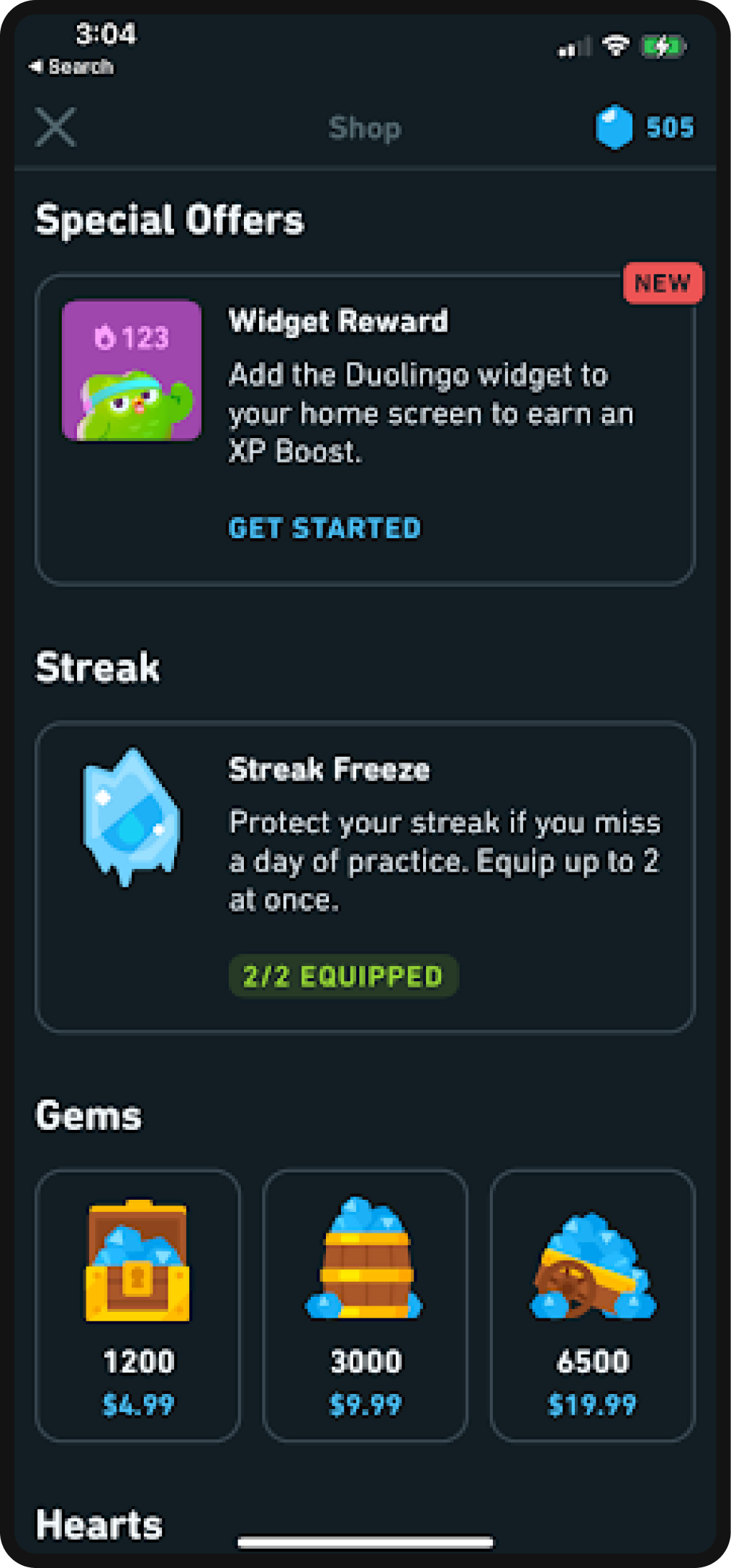
An important piece of PLG that Duolingo tapped into within their product was the idea of instant gratification. Duolingo learners can correct courses in real time, building a robust foundation for their language skills. Not only is a user’s learning instantaneously reinforced through immediate feedback on exercises, which is a proven tactic in habit formation and learning; but their commitment to learning immediately sees reward via these points and gems. Layering this on with additional product features such as levels, progress bars, and leagues, these features provided learners with visual feedback and a visceral representation of their learning journey as they completed lessons and exercises.
Additionally, Duolingo offers a variety of mini-challenges and badges for completing specific tasks or milestones, such as mastering a skill or reaching a certain level. These virtual rewards transformed mastering a language from a daunting task with benefits that can only be reaped long term into a simple, fun rewarding game that provided users with an immediate boost of serotonin as they feel a sense of accomplishment. Seeking inspiration from how gamification was able to boost their engagement and retention rates beyond what they had imagined, the Duolingo team was now inspired to build a growth engine with gamification at its core.
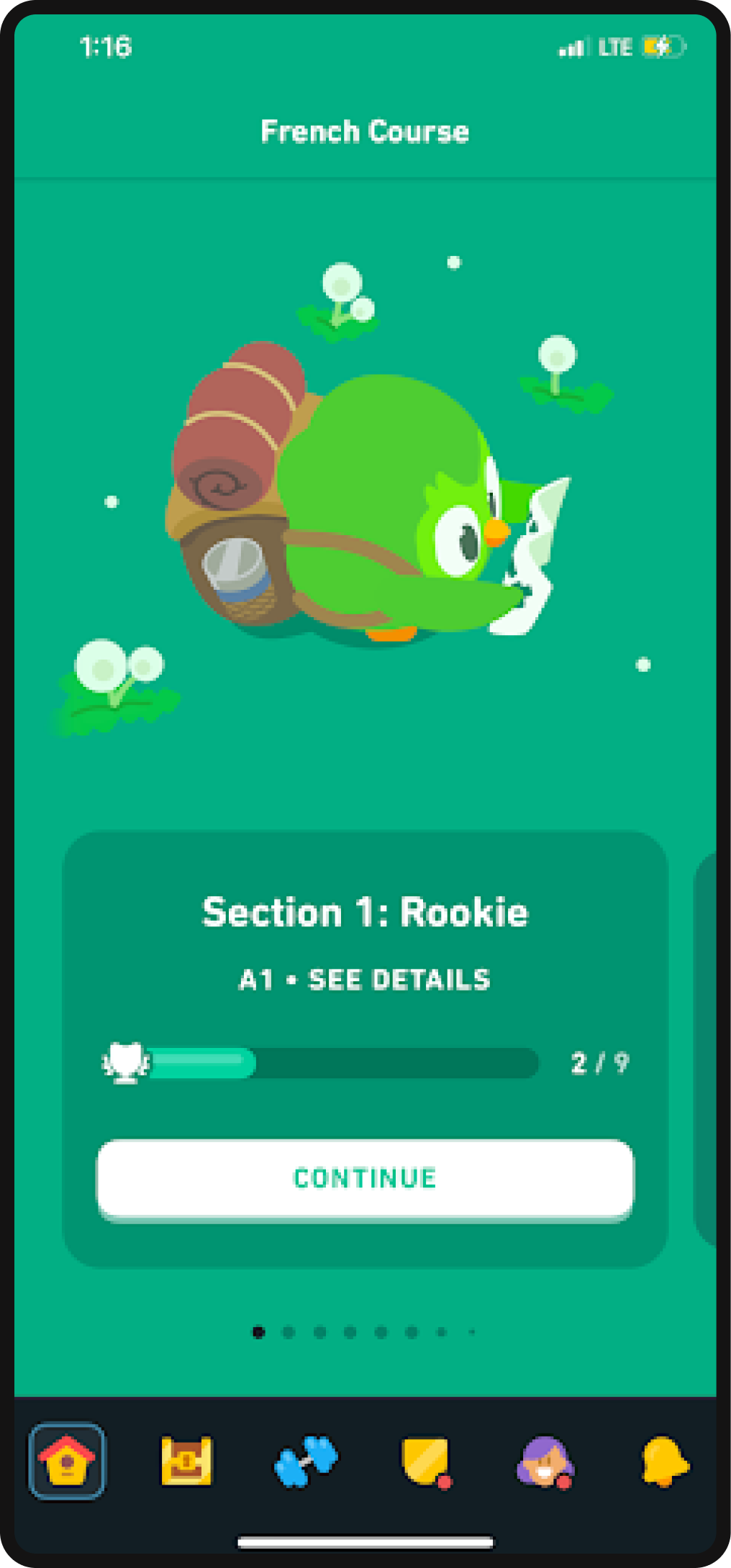
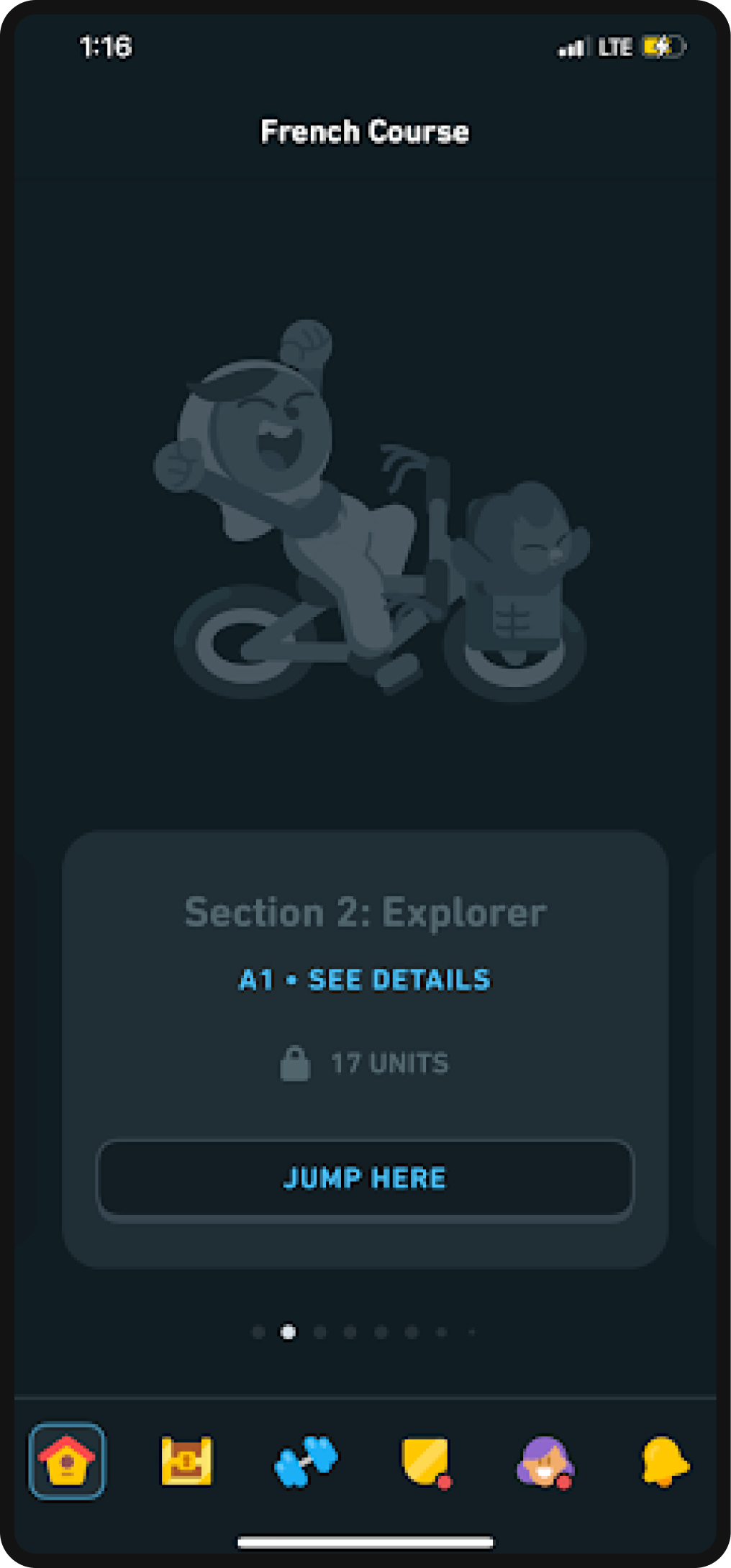
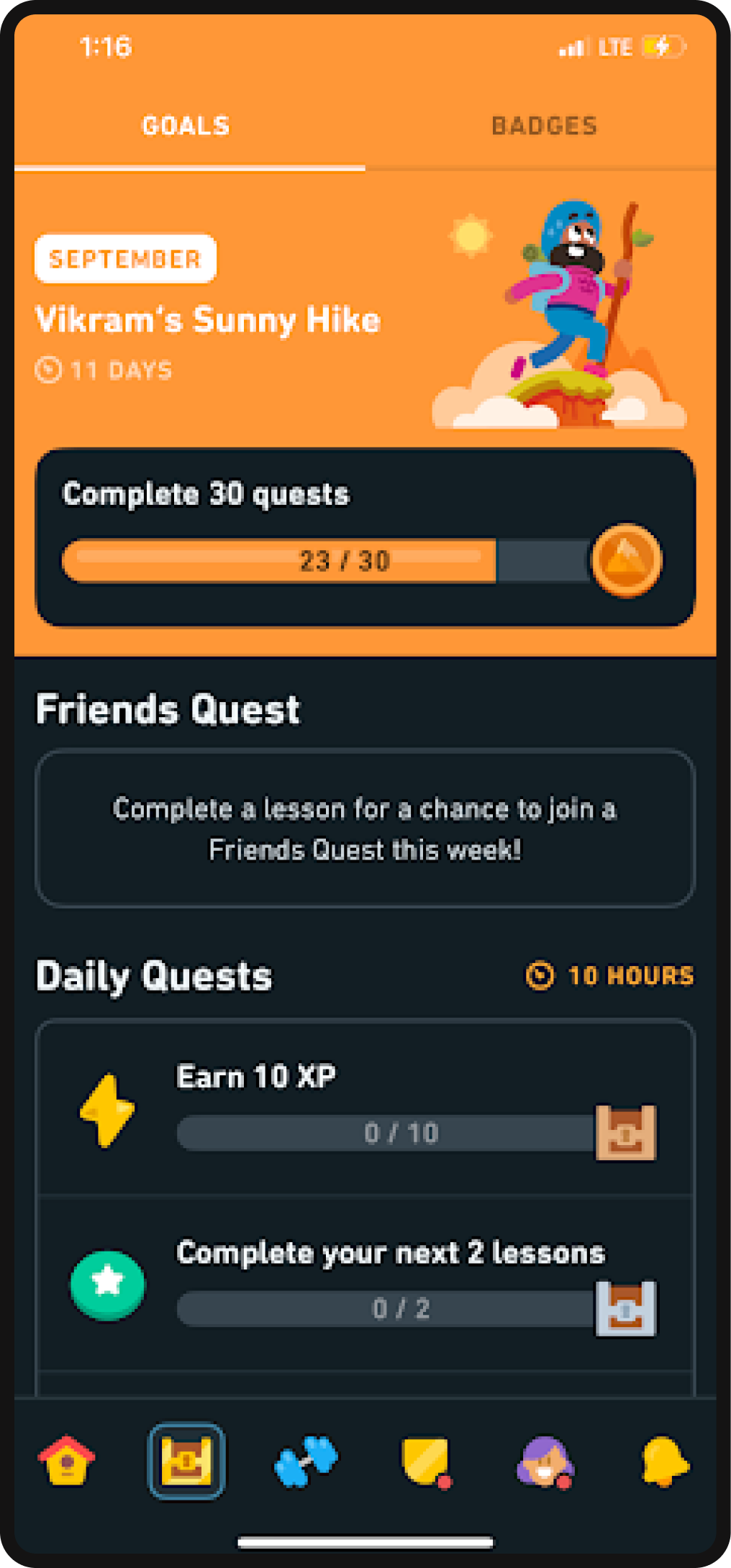
While Duolingo had its “leveling up” model figured out, it now had to integrate gamification into every nook and cranny of its app. Enter Streaks. As part of the company’s growth, retention was a key metric that Duolingo was hyperfocused on. It was crucial for Duolingo’s business model, since it was based on ads and subscriptions, that users keep coming back to their application and use it as much as possible. Duolingo encouraged daily practice by implementing streaks. Users are rewarded for consecutive days of learning, and breaking a streak can serve as a disincentive for missing a day.
This keeps learners engaged and committed to regular practice. As part of the gamification of streaks, Duolingo used lifecycle marketing to implement a key growth tool in the form of streak-saver notification— a notification at the end of every day that alerted users if they were about to lose their streak. This late-night notification proved to have considerable upside. Students who were having trouble committing a language to practice in their everyday lives saw their commitment to learning reignited with this simple feature alone. With this, Duolingo shortly doubled down on several improvements around streaks, including calendar views of the number of days in a streak achieved, animations, streak freezes, and rewards. Each generated substantial improvements in user engagement and retention.
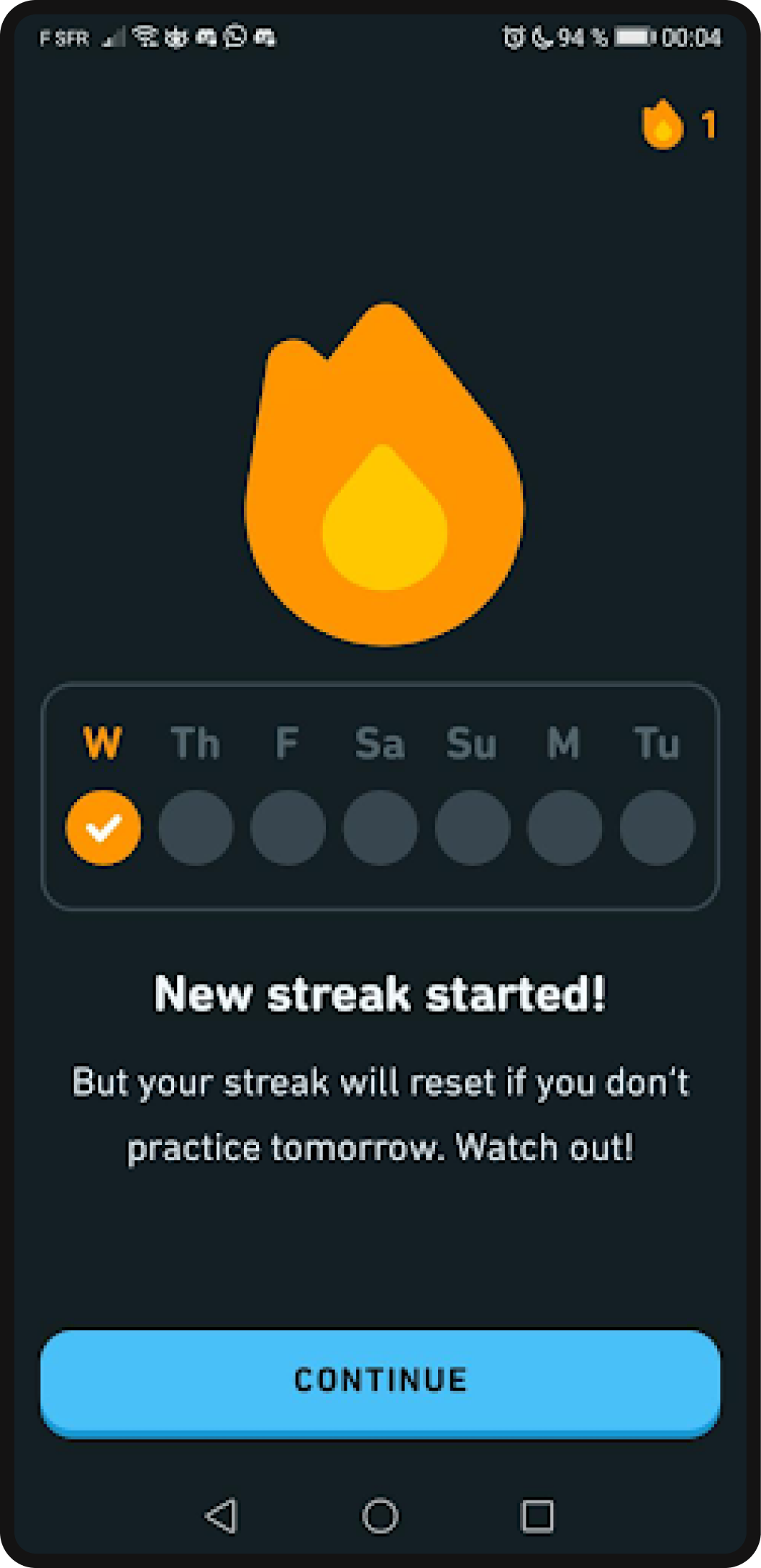
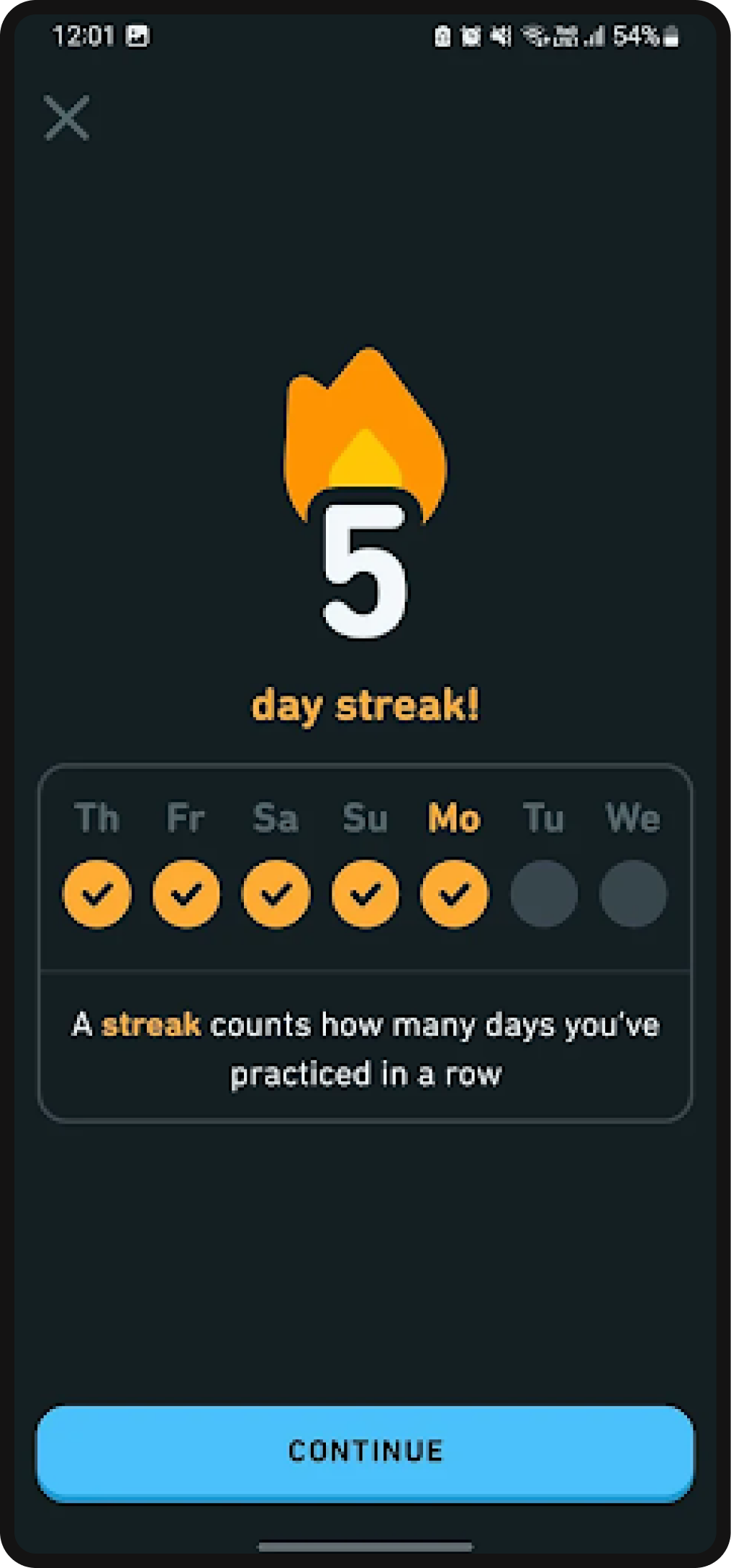
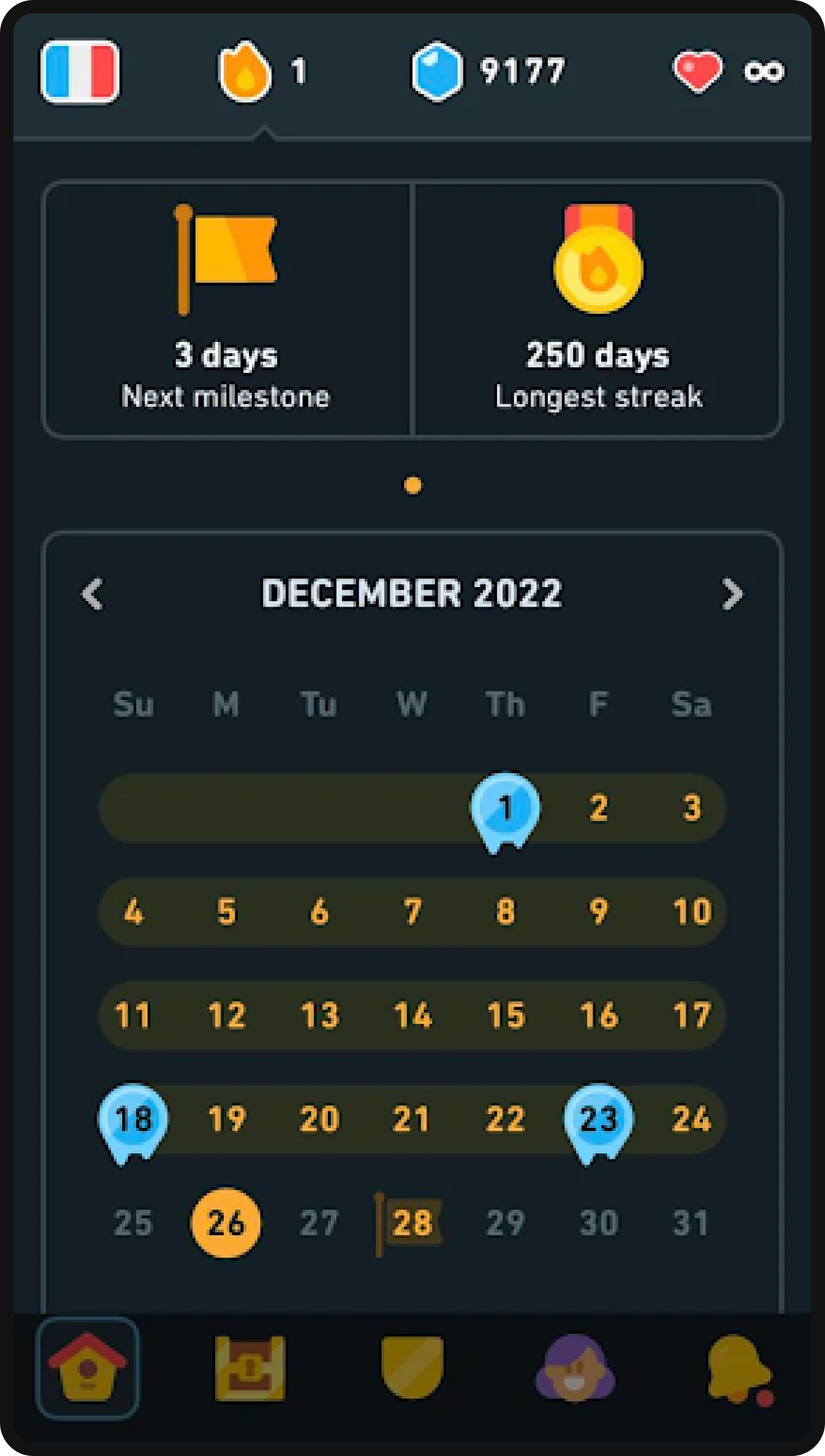
Community-Driven Learning
Duolingo may offer courses in over 40 languages, but the app itself has to speak in a universal tongue with an experience that transcends any cultural or linguistic barriers. One of the first challenges of PLG that Duolingo faced was rebuilding the crucial classroom-teacher-student rigor and community that helps students stay motivated to learn, as it would have a direct impact on retention within the app. While most language courses are top-down curriculums, Duolingo had to completely rethink language learning from the bottom up, with PLG at the core of the curriculum product features that they rolled out.
The first thing that Duolingo did was to focus their users on bite-sized mastery. Duolingo ingeniously distills language learning into digestible chunks, eliminating the intimidation often associated with mastering a new language. Instead of being just another dry task that a user had to cross off their checklist each day, each lesson is a mini-adventure, a game of linguistic discovery that keeps users engrossed. Beyond leveling up and competing against themselves, Duolingo, more importantly, realized the effect of community and how current advocates of the app could influence and encourage new users to continue learning on the app.
Duolingo started to opt users into leagues where users were able to compete with other learners. Users could progress to the top of the first league by merely engaging consistently in their regular language study. They also had the opportunity to move through a series of league levels (Bronze, Silver, and Gold league) that let them compete against varying segments of engaged users, which granted them a greater sense of progress and reward – another integral element that the Duolingo team borrowed from game design.
By employing leaderboards, Duolingo not only fostered a greater sense of a learning community but also fueled a friendly rivalry among learners. The sense of community within the app served the function of recreating the classroom-teacher-student emotional bond, but the competitive edge added another layer of engagement to the user experience.
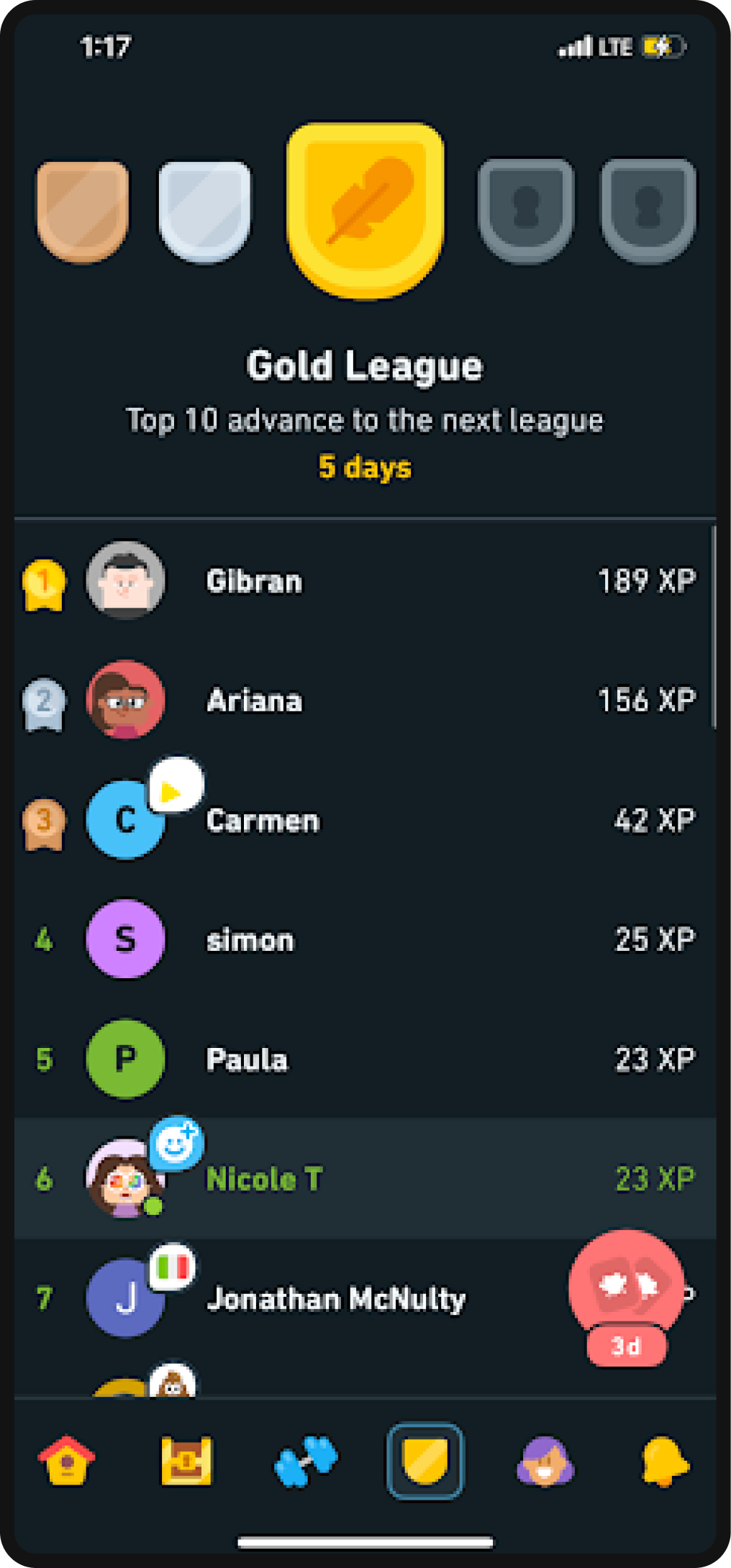
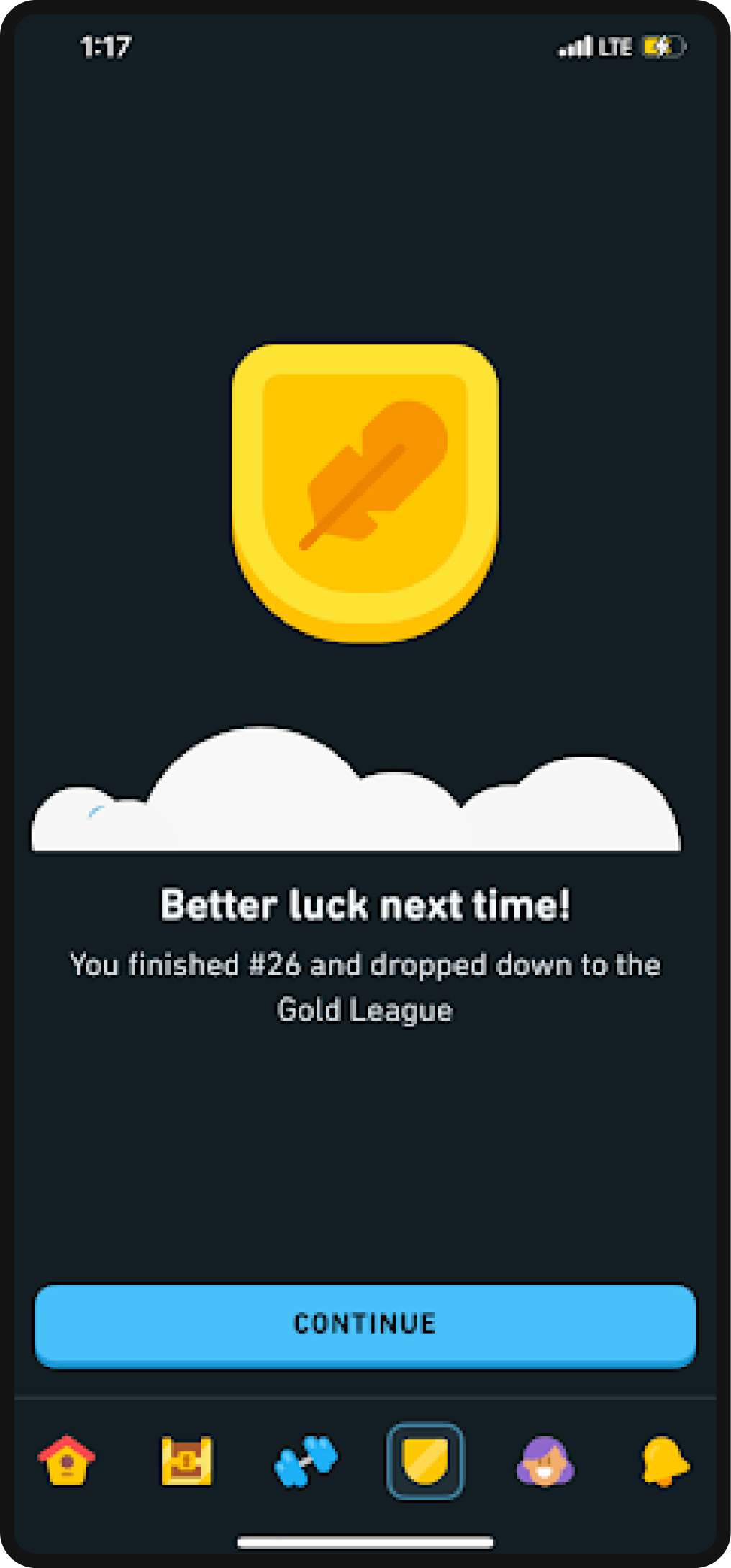
To take community engagement further, Duolingo continued fostering a sense of community among users through discussion forums and language clubs, allowing learners to connect with others who share their language-learning goals. Throughout the app, Duolingo also makes sure to embed push notifications and prompts encouraging users to share their language-learning achievements and progress on social media platforms like Instagram and Twitter. This word-of-mouth marketing through social sharing helps attract new users and promotes the platform’s positive reputation.
Duolingo created a machine that fed learners with serotonin and reinforced the positive impact of users continuously coming back to the app as engaged users moved up to more competitive leagues week after week. The realization that Duolingo could borrow from gaming instead of simply benchmarking itself against other edtech companies enabled the team to experiment with new approaches to learning.
A learning-driven team obsessed with A/B testing
The ideal PLG loop is led by product, powered by data, and assisted by channels. From the get-go, the Duolingo team knew that users do not know what they want — rather, well-thought-out hypotheses backed by data were the key foundations in order to achieve the growth they needed. Testing is a game of instinct, and the Duolingo team knew that they had to constantly iterate and use quick AB testing to drive growth.
One of the first things that Duolingo AB tested was its soft-walled signup page. Duolingo realized that while it could acquire users, it experienced a major leak at the very onset — the sign-up page. However, it was easy to retain users once they got into the learning experience. Instead, they experimented with the concept of soft-walled signup pages where users could begin learning instantly but encountered soft walls in the form of optional signup screens that could be skipped to continue learning.
With this experiment alone, the Duolingo team managed to increase DAUs by 20%. In addition, their freemium model, where users do not incur any upfront cost, enables users to access a significant portion of the platform’s features and content right away for free, which further encourages user acquisition and engagement. Product usage then becomes the primary lever for product education and user nurturing which is much more powerful and direct. This anchors the Duolingo team on pushing for quick activation and meaningful product usage, which are the key success factors for generating PQLs.
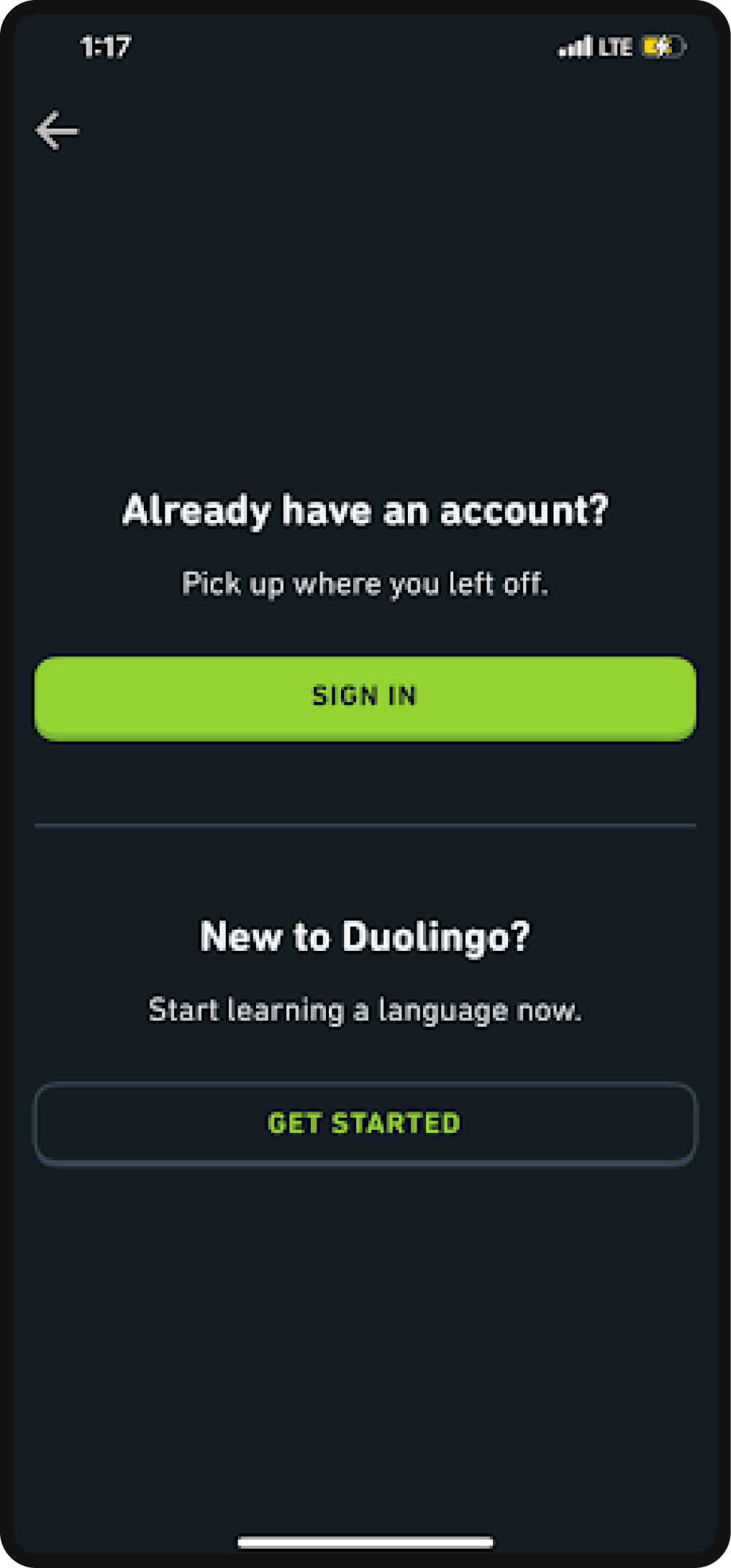
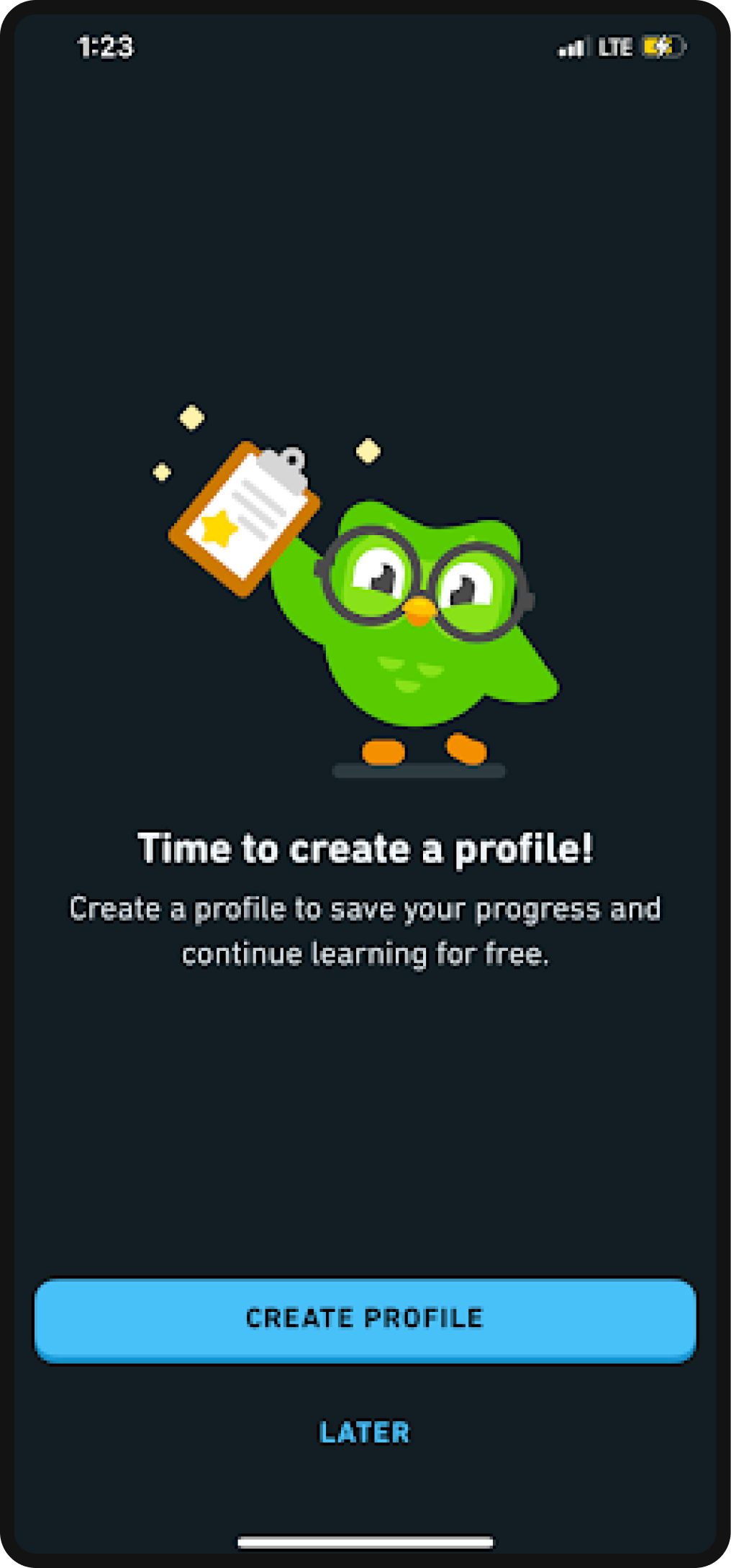
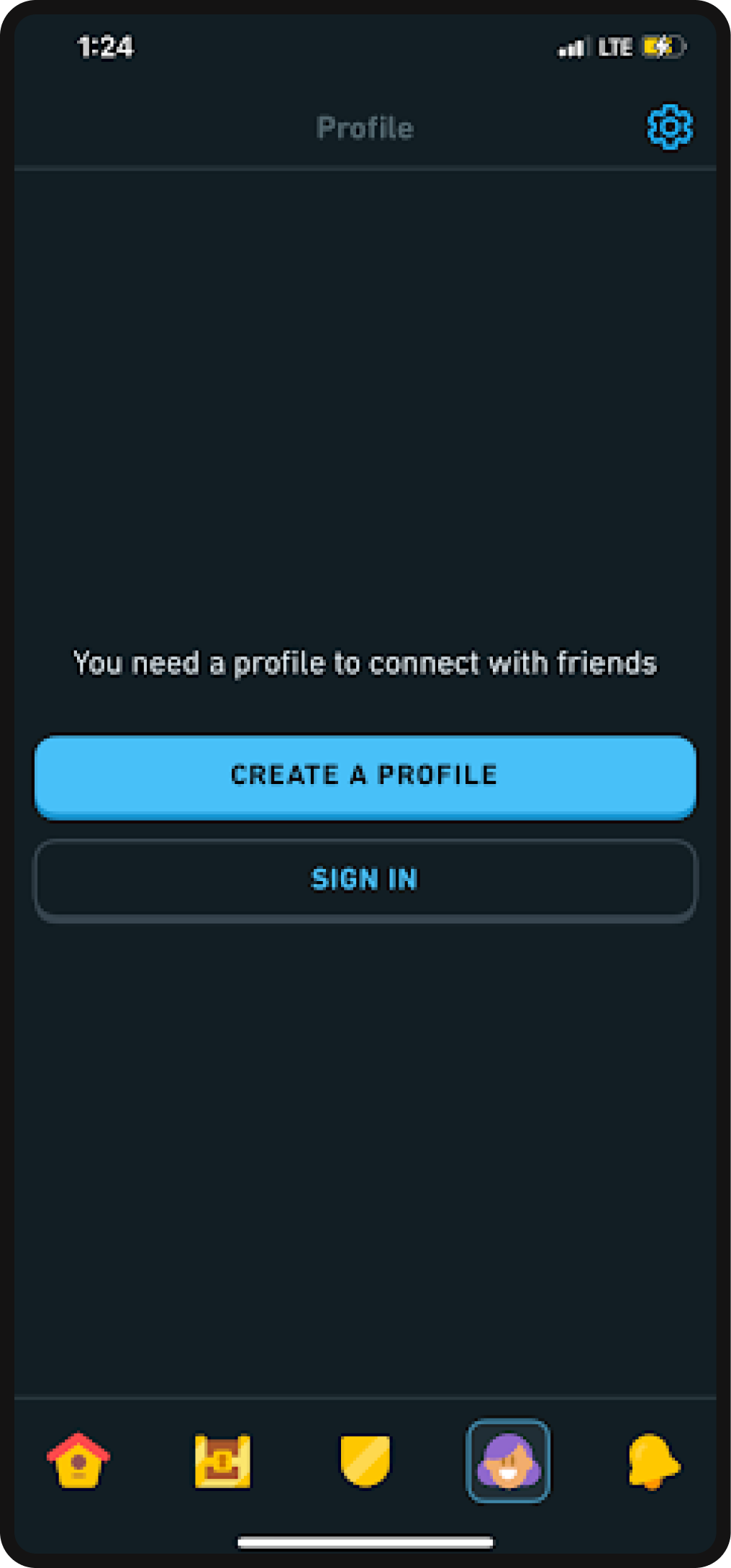
Another key area that Duolingo experimented heavily in was Push Notifications. Well known for its official mascot, an evergreen-colored owl Duo, Duolingo had the perfect excuse in the form of their mascot, which they positioned as their learner’s #1 fan and biggest cheerleader who isn’t shy about checking in or laying on a guilt trip. Openly addressed by Duolingo in their tone and voice documentation of Duo, Duo is a very persistent mascot whose “only thing he loves more than Duolingo is seeing our learners succeed.”
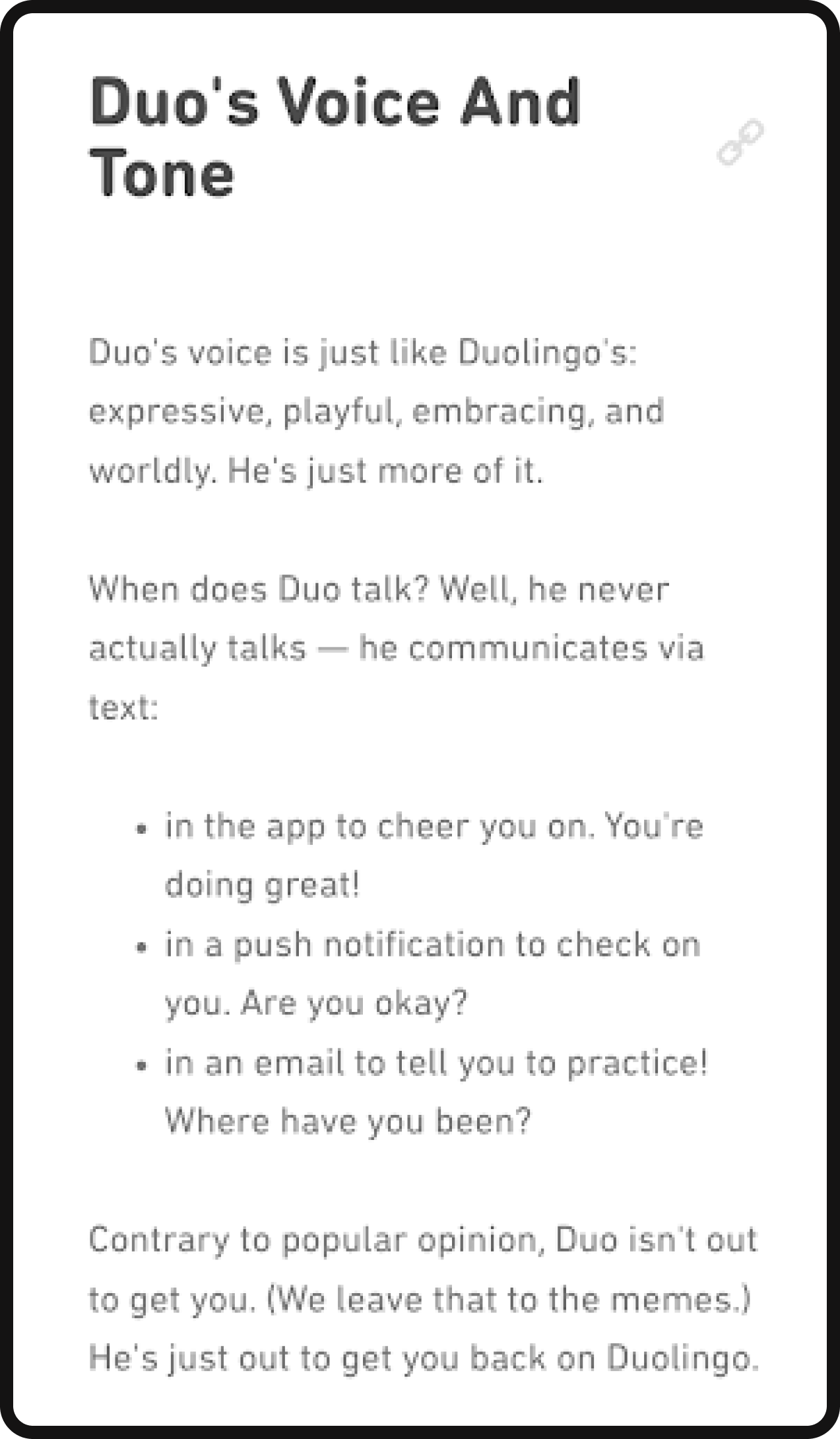
With that, Duolingo created the perfect facade to call users back. But its real power move was in its intentional goal setting at the heart of streaks, where learners were able to select their goal of how committed they were to learning each day. With learners giving Duolingo a reason to call them back, Duo was now able to double down on its notifications.
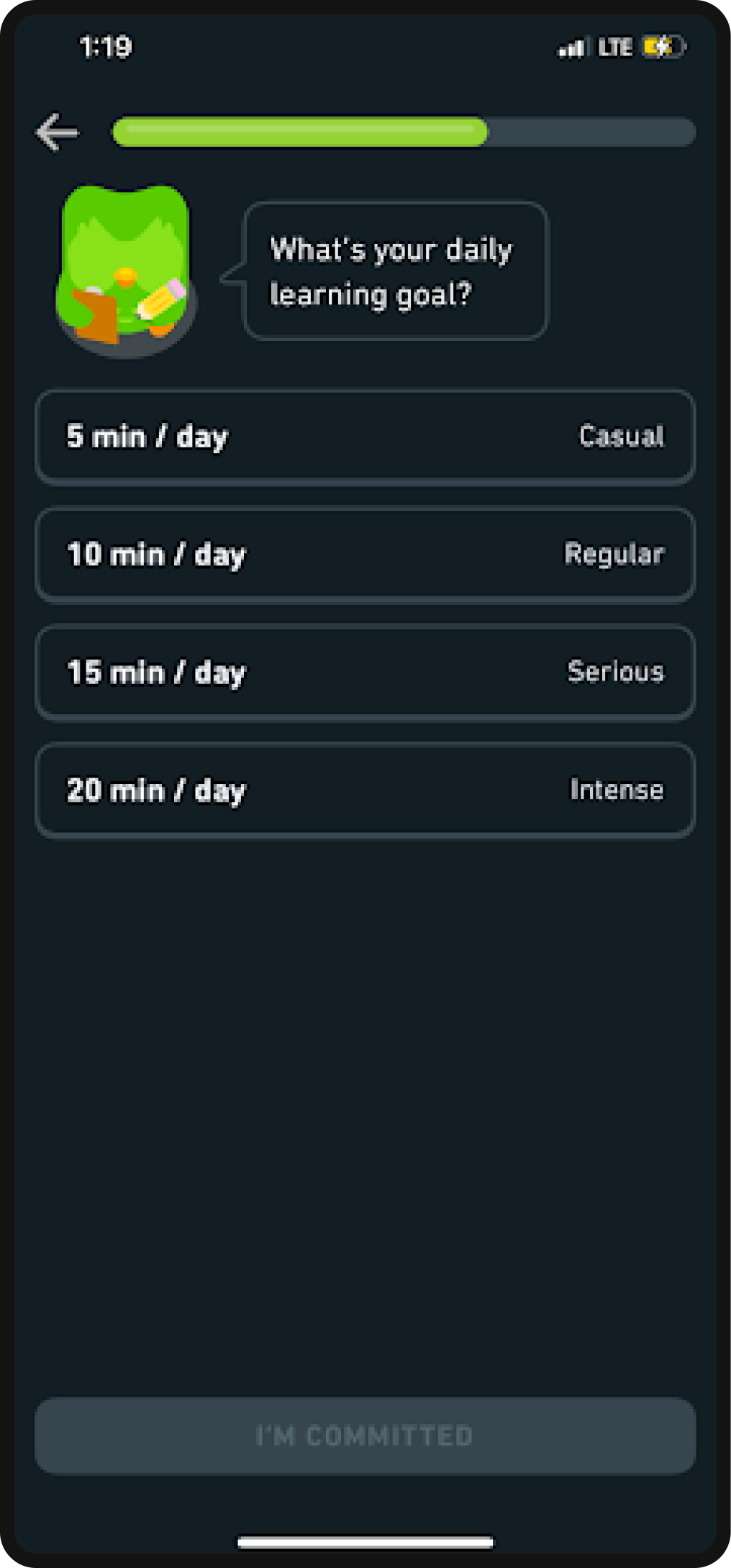
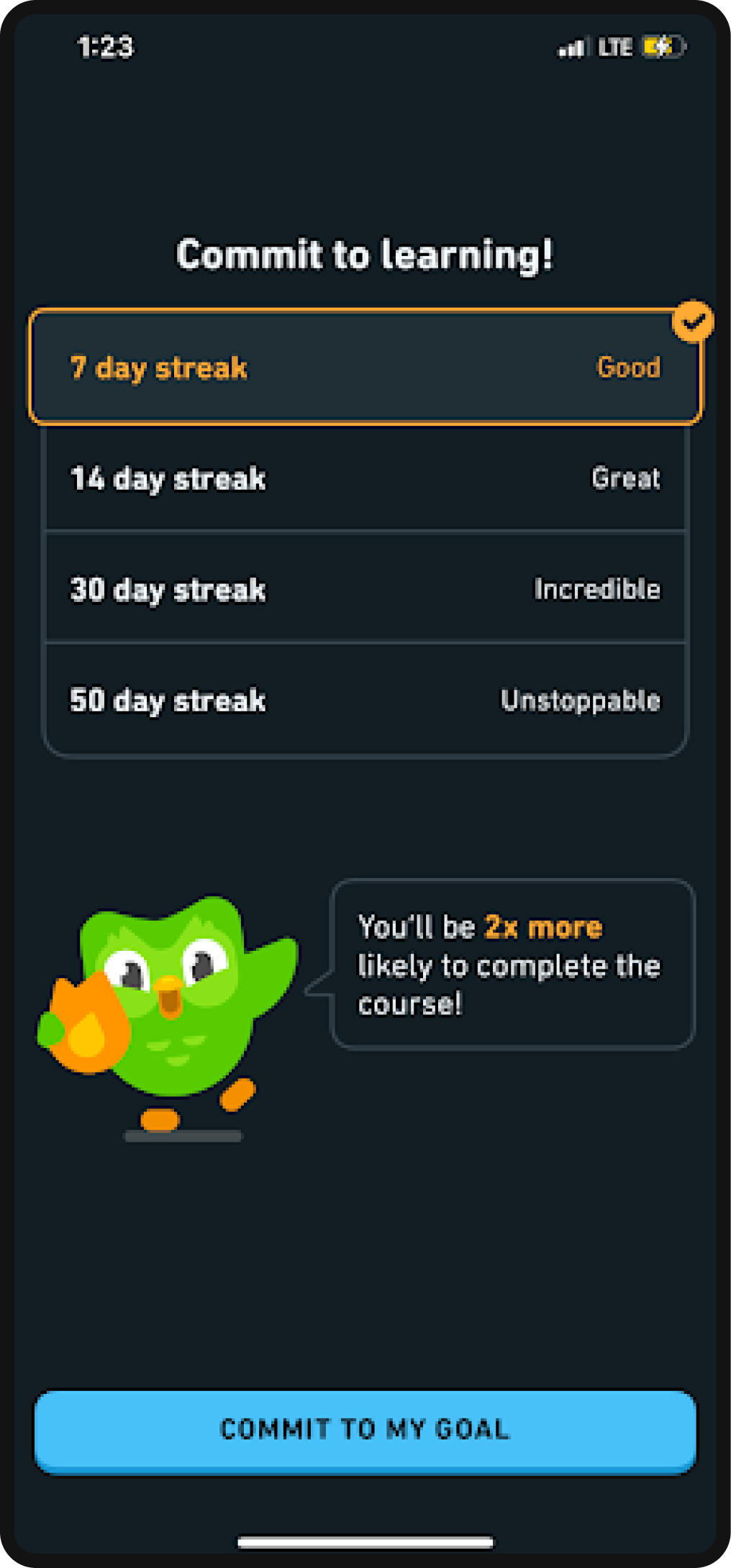
Duolingo didn’t just send notifications — they conducted a simple A/B test of adding a tiny red dot to the app icon when folks had been notified to practice, which went on to demonstrate a 1.5% increase in DAU.

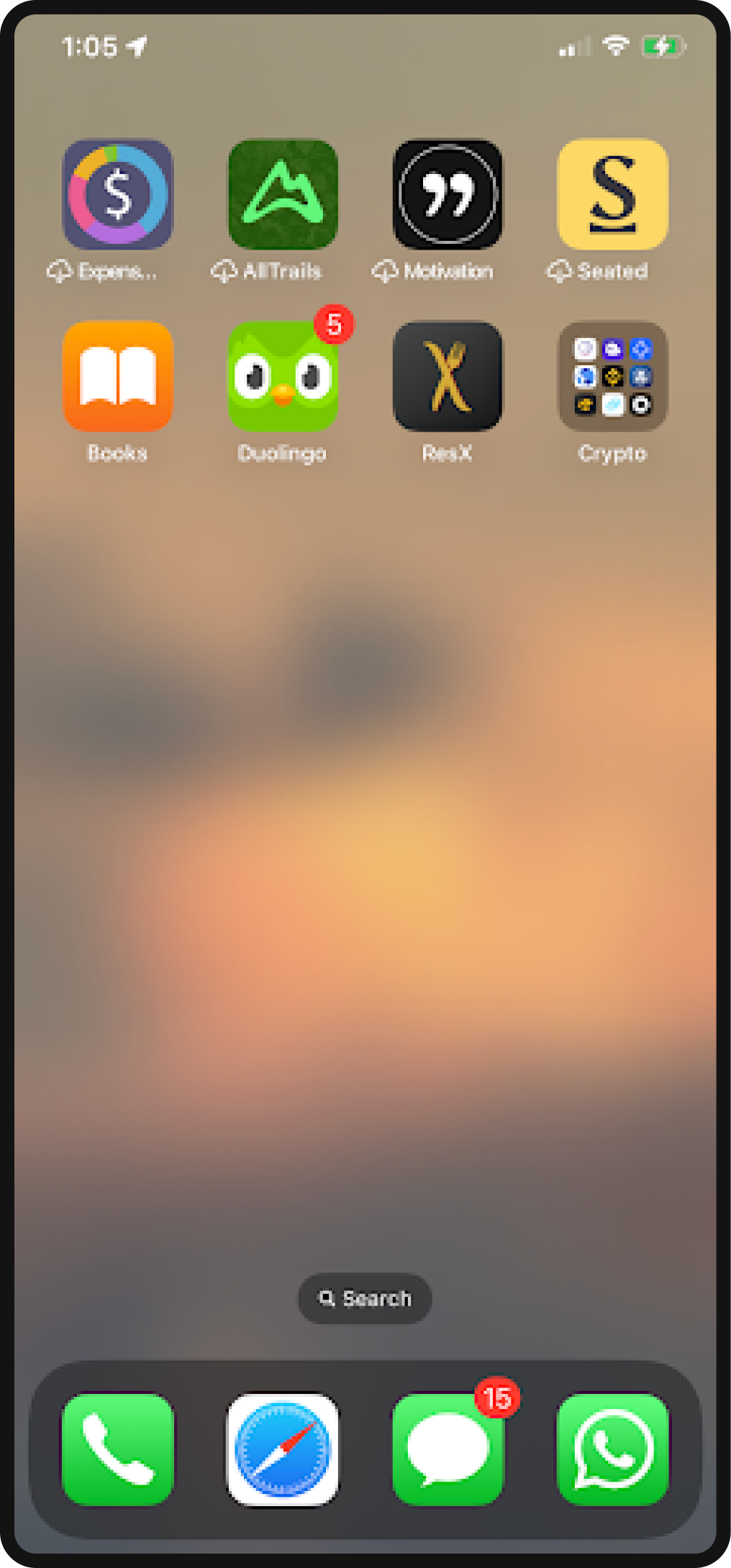
Duolingo’s product-led growth strategy, which emphasizes gamification, community-based learning, and data-driven A/B testing, has been instrumental in helping the company acquire millions of users who are not only engaged but are firm advocates of the platform. By implementing Product Led Growth tactics that tapped directly into common human motivators of competitiveness and progression, Duolingo has not only made the language-learning experience enjoyable but also created a sense of achievement, competition, and motivation that keeps users engaged and returning to the platform regularly — truly creating the world’s best free, fun, and effective way to learn a language!



